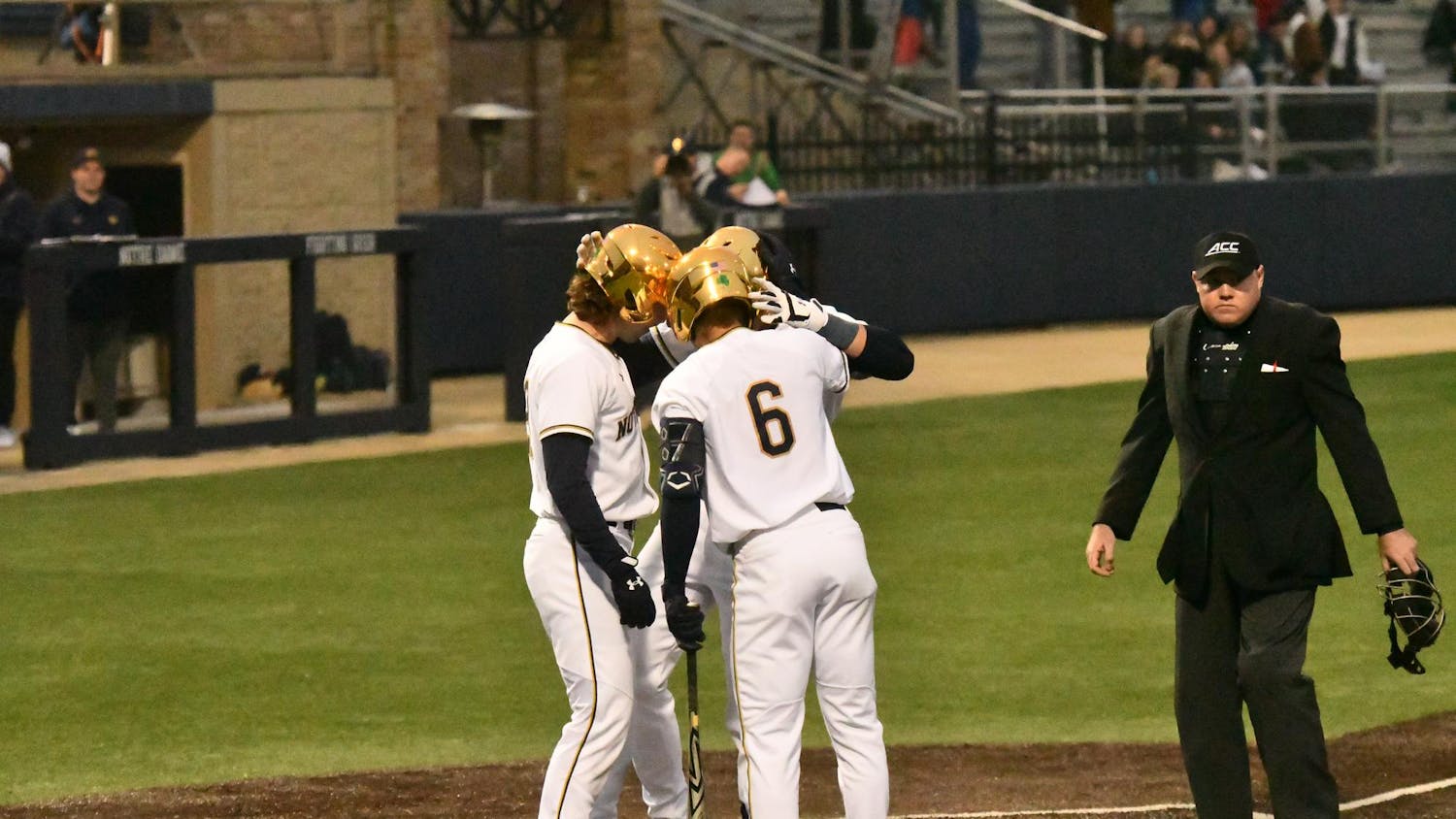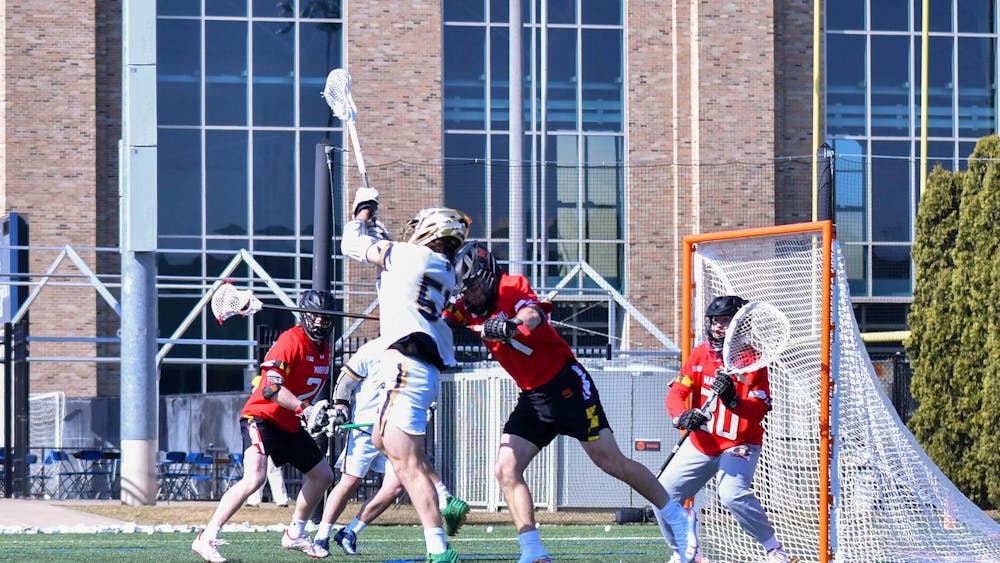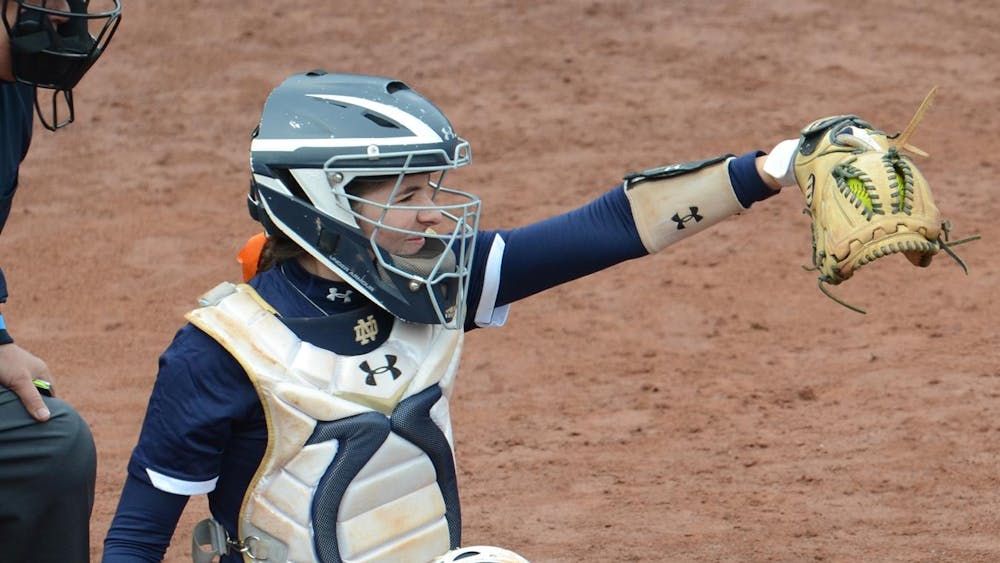On March 3, Luke Harangody became the first-ever Irish player to be inducted into the Purcell Pavilion's Ring of Honor. His No. 44 jersey climbed to the rafters, celebrating four years of awards, accolades and success.
"Seeing some of the players involved in this University, for me to be the first one, it was a tremendous honor," the senior forward said. "That was a very proud night for myself."

One of many.
Harangody will graduate as Notre Dame's second-leading scorer and rebounder. His class made the NCAA Tournament three out of four years and has won more games than any other class in school history. He was named the 2008 Big East Player of the Year, was a second-team All-American in 2008 and 2009 and became the first Notre Dame player to be named to the Big East first-team three times.
As a freshman, Harangody said he didn't anticipate it.
"No, there's no way I ever saw that," he said.
Harangody received four varsity letters at Andrean High School in Schererville, Ind., where he won two conference and three sectional championships. When he got to Notre Dame, he and then-freshman guard Tory Jackson played early in the season.
"We threw them in there, both of them were key guys as freshman," Irish coach Mike Brey said. "We went to the NCAA Tournament because they were ready as freshman to be men in this league. They have an unbelievable mental and physical toughness, both of them, that I think has permeated through our group. It's helped some other guys who aren't at their level of mental and physical toughness-wise pick it up at times."

Harangody said he and Jackson entered their rookie seasons with a "business-like" attitude, which helped Notre Dame earn a No. 6 seed in the 2007 NCAA Tournament. The Irish lost to No. 11 seed Winthrop in the first round. Harangody averaged 11.2 points per game that season in more than 20 minutes per game and became the first freshman since Troy Murphy to score in double figures in his first five games.
"[The NCAA Tournament freshman year] was a pretty memorable season because it was my first go-around with things," he said. "It was something I'll always remember."
Harangody, like any athlete, said he believes in off-season improvement, so he used the summer to hone his game as well as his fitness. The next season, he averaged 20.4 points and 10.6 rebounds per game.
"It all has to do with work ethic," he said. "Every summer, whether it's been working on my body or working on another part of my game, just get better every year."
It was that season that earned him conference Player of the Year honors.
The Irish earned a No. 5 seed in the Dance that year and beat George Mason easily in the first round. Despite Harangody's 22 rebounds, No. 4 seed Washington State took down the Irish in the second round.
During Harangody's junior season, Notre Dame started 12-3 but lost seven straight games and dropped out of contention for the Tournament. It wasn't for a lack of production from Harangody: He led the team in scoring for 14 consecutive games and averaged a career-best 23.3 points and 11.8 boards per game. Harangody scored 30 points against Kentucky in the NIT quarterfinals and had a double-double in the semifinal loss to Penn State.
Then came decision time. In April 2009, Harangody, then a junior, declared his eligibility for the NBA Draft. He didn't hire an agent, however, which allowed him the opportunity to change his mind and return to school.
"I think when you are a kid shooting around at the park, every kid dreams of playing in the NBA and obviously I did and this has always been a dream of mine," he said on April 16, 2009. "So I mean for me, it's neat to be standing up here and announcing this decision today.
"This is a new territory for me. But, you know, one of the best things is that with the team I have, the teammates I have, I told them this week what I was going to do and they have been so supportive, not only the team's leader but the guys that are going to be on the team next year and, you know, I wasn't very surprised at that because I know we have some of the best guys in the world here, in the country."
Those supportive teammates played a role in Harangody's decision to forgo the draft and return to school to finish his senior year.
"It was obvious to see that the NBA is a business," he said on July 15, 2009. "It's not like being at Notre Dame around the group of guys that we have. I realize it's a once-in-a-lifetime opportunity to be with a group like this."
Harangody said he wasn't ready to give up one last go-around with his teammates.
"It was one more year to be around the guys and get a senior year," Harangody said recently. "It's something I truly hold special. Now I get a chance to watch these guys succeed in the postseason and also get my degree."
Harangody said his parents and Brey helped him with the decision.
"[Brey] was very helpful throughout the whole process. He wasn't like, ‘Come back to school,'" Harangody said. "He gave me options to go out there. He was always open to me, which I really appreciated. In the end, my parents and I and coach Brey sat down and talked about the whole situation and I just felt more comfortable coming back to school here."
That senior season didn't pan out quite like he planned. At first the Irish played well, but once they got into conference play they had two rough stretches, losing three out of five and four out of seven at various points. Worse still, Harangody suffered a bone bruise in his knee on Feb. 11 against Seton Hall and missed five games because of the injury. At one point the Irish were 6-8 in the conference and the season's funeral march was beginning.
Even with a serious injury, Harangody wouldn't be slowed. He missed the next game, against St. John's, but convinced everyone he would play against Louisville on Feb. 17.
"He kind of talked us into he was going to try and play," Brey said. "He had everybody, the doctors the trainers, me. ‘I'm going.' He didn't bring any street clothes. ‘I'm playing.'"
It took Brey to stop him.
"He wasn't feeling good [after the shoot-around]," Brey said. "I told him after shoot-around, ‘Well I'm not playing you so how's that? Does that make the decision easier? You're not ready.'"
But then a funny thing happened: Notre Dame slowed down its offense and had success.
The Irish lost in double overtime to Louisville, but won their next three games, including two over top-15 opponents, to finish the season. All without Harangody.
"What I've been really happy with, since he's been down, how he's been helping [freshman forward Jack] Cooley and [junior forward Carleton] Scott," Brey said. "His voice with those guys during the game, halftime, I could hear his voice in the locker room. He's a leader and kind of a coach for us."
"I think you just try to keep their confidence up," Harangody said of his approach with Scott and Cooley. "At first, the first game against St. John's after I left, a couple guys didn't really know how to approach it. But it as it went on and they got more practice time it was like night and day."
Harangody recovered enough to play in Notre Dame's last regular-season game, an overtime win on the road against Marquette. He came off the bench for 11 minutes and scored five points.
He also played in all three of Notre Dame's Big East tournament games, averaging 14 points and 24 minutes per game.
But even with Harangody's presence, the sixth-seeded Irish could not get past No. 11 Old Dominion in the first round of this year's NCAA Tournament, falling 51-50. In his final game, Harangody played 23 minutes off the bench, and his four points, his only four points in the game, in the final 15 seconds were nearly enough for Notre Dame to slip into the second round.
"When he got here he made us believe again," Brey said. "He was an impact guy. Look at what he's done throughout his career.
"He's been one of the greatest to ever wear a uniform here. Flat out."
This story originally appeared in the March 19 edition of The Observer.












